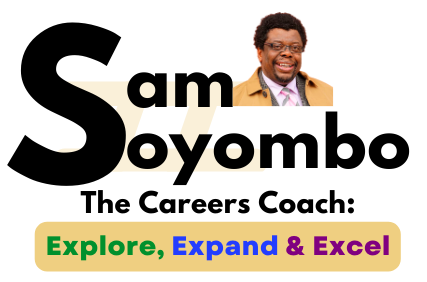
CVs, though not the most exciting topic to delve into their historical origins, remain an integral part of the employment landscape. Despite numerous efforts to revolutionise the hiring process, they continue to serve as the primary tool for employers to assess potential candidates. While their future may hold changes, for the time being, resumes are here to stay!
Crafting a compelling CV may not be the most thrilling task, but its importance must be balanced in employment. Despite various attempts to revolutionise the hiring process, resumes remain the primary tool for employers to evaluate potential candidates. While the future may change this traditional format, CVs are undeniably here to stay.
While I may not be a recruiter or an HR professional, I have gained valuable insights from my experiences and witnessed positive outcomes by implementing specific strategies. By incorporating practical tips and techniques, you can maximise your chances of success in the competitive job market. From CV file formats to the structure of your professional experiences, we will cover essential tips to help you create an outstanding CV. It is important to note that while these suggestions are valuable, they are not definitive rules, and you should tailor your CV to reflect your strengths and circumstances best.
Let us delve into a comprehensive guide that will equip you with the knowledge and techniques to develop an impressive CV. By implementing these tips, you can increase your chances of catching the attention of recruiters and securing opportunities that align with your career aspirations. Remember, a well-crafted CV can be the key that opens doors to exciting possibilities.
I see a CV as you want to write it with lots of upsides and little to no downsides. What do I mean? You should include items that will likely improve your chances, not things that may work against you. I will touch on this as we go through the tips. In essence, you want your CV to be written so that a recruiter picks it, starts ticking off points or nods affirmatively to the point where they think of calling you.
Let’s dive in.
Tip 1 – CV File Name
My general advice here is that it should simply be your name, surname, and any accreditation you have that supports THAT application. If you apply for an accounting role, your CV should be saved as Your name ACCA. What this does is that before your CV is even opened, the recruiter is already excited as they know you are qualified, so they are going into your CV with positive expectations. If you have an accreditation as a Business Analyst and you are applying for an accounting role, do not add this as it is of no value-add.
Tip 2 – CV File Format
PDF – This locks your CV in the format you have written and presents it as you want it delivered to the recruiter. Submitting your CV in Word could be detrimental because what happens sometimes is when the CV is opened using a different application, it may mess up your formatting to the point where your CV becomes less legible. Only use the non-PDF version if explicitly stated by a recruiter.
Tip 3 – Name/Email/Mobile etc.
It is where you add your key details at the top of your CV. Again, When writing your name, include relevant accreditations but not overtly, e.g., First and Surname ACCA rather than First and Surname ACCA, BA, MSc, PhD, CMA, etc.
Add key contact details, including email address and mobile number (in the format, i.e. 07… not +447…), and some people include LinkedIn now so you can. If you have an email that may put you in a bad light, consider creating another one. An email address like [email protected] may have been fun at uni but may work against you on your CV.
Tip 4 – Profile/Summary
Most CVs now include a summary at the top, and there is debate about whether this is needed. I generally keep it short to 3-4 lines. The logic I wrote in this section focuses on three key points to hit.
- What I have been doing makes me ideal for the role and what I can bring to the table.
- Why am I interested in that role?
- Why am I interested in that company/industry?
- Keep all this concise and straight to the point. You are already blabbing once you cross that 3-4 lines boundary.
Tip 5 – Key Skills/Achievements
I am seeing this more and more on CVs, and I am not against it. If you must add this, again, keep it short, keep it relevant. If applying for an accounting role, don’t add Strong Social Media as a skill, as it is irrelevant to the position. For achievement, mention two achievements you are proud of; the more aligned to the role, the better.
Tip 6 – Education or Past Experiences
If you are a graduate, your education is more relevant than your part-time jobs while studying, so go straight to education and then experiences later. If you are a skilled job seeker, your past experiences should come before your education.
Tip 7 – Past Experiences
For this section, format the header as shown in the template; this way, it is clean and easy to follow for a recruiter. Some folks lump it all on one line, which looks messy and illegible.
Use action words when describing your role, such as: coordinated, challenged, managed, and empowered should be used across your CV. You can find a list of these words on Google.
For each job description, keep this brief. Recruiters want you to line your previous job description to their job spec. For example, suppose on the job spec, one of the responsibilities includes ‘Preparation of monthly accounts’, and you have done this or do this in your current role. In that case, you should copy and paste word for word in your job description.
Why? It makes the recruiters’ work much easier so that as they scan down your CV, you are simply feeding them what they need to the point where they decide to give you that call or send that interview request email to you.
Tip 8 – Education
If you are experienced, this section should be short and include your University/College Degree. It is optional to add graduation year as you may be discriminated against. You do not need to include details of your degree, including modules etc. You do not need your graduating grade, e.g. 2.1 but feel free to add if you got a 1st, as that will never work against you.
If you are a recent graduate, include your University/College, Degree and relevant modules to the role. It is optional to add graduation year as you may be discriminated against. You do not need to include details of your degree, including modules etc. You do not need your graduating grade, e.g. 2.1 but feel free to add if you got a 1st, as that will never work against you.
Tip 9 – References
Now obsolete. There is currently no value in even referring to this at all. Don’t even say it will be available on request; that goes without saying.
Tip 10 – Your Interests
I usually don’t recommend adding this to my CV, but keep it brief and relevant if necessary.
Tip 11 – Recruiters’ Interests
Keep your CV to a maximum of 2 pages. Remember, recruiters have many CVs to go through, and if you still need to add the exciting stuff they want to see on page 1 or 2, you can be sure they will stay on page 3. Also, keeping the limit to 2 pages forces you to keep your CV straight to the point and sell yourself much quicker.
———————————————————–
I have shared some Dos above (Tips 1-11); now, let’s cover some Don’ts (Tips 12-15).
———————————————————–
Tip 12 – Home Address & City
Leave this detail off of your CV. There is no upside per se, but a potential downside is if your location is unfavourable for the role.
Tip 13 – Be Local
Because many people within my network are first-generation immigrants and have lots of international experience, especially in Africa, dotting this fact all over your CV could work against you if some calibre of recruiters is reviewing your CV. For example, if Kudzai worked for Chartered Business Bank Zimbabwe, he should write Chartered Business Bank and ignore Zimbabwe.
In an ideal world, all skills from all over the world should be appreciated. However, the issue is that recruiters still need to appreciate experience from the African continent as they would from Canada, Australia, etc. To avoid being disadvantaged, I advise you to remove every trace of Africa on your CV and keep it vanilla. Only include if it improves your chances, e.g., where job spec says they want someone with Zimbabwean experience (unlikely, but hey, you never know).
Tip 14 – Typos & Consistency!
Review. Review. Review. Ensure your CV is free of typos before it goes out. A typo-ridden CV shows that if you are putting in this little effort before joining a company, it only gets worse once you join.
Ensure your use of bullets, fonts, and layering of your CV is consistent. Failing this will make your CV much harder to read, and a recruiter with 20 CVs will likely bin yours. Nothing personal.
Tip 15 – Picture
Suppose it is not relevant in any way on a CV. Do not include.
Tip 16 – Magic!
Ensure your CV does not take a recruiter on a mesmerising journey such that, in the end, they are not sure who you are. Let your CV have a nice flow and rhythm.
Let others look at your CV and give you feedback regarding how understandable your CV is. If your CV proves to be a mystery, it will likely end up in the bin.
Crafting an exceptional CV is crucial in showcasing your qualifications and standing out in today’s competitive job market. While CVs may not be the most fascinating aspect of the job search process, their importance in securing employment opportunities cannot be underestimated.
This article has explored various tips and strategies to enhance your CV’s effectiveness. From optimising file names and formats to highlighting relevant skills and experiences, each detail plays a significant role in capturing the attention of recruiters and potential employers.
It is important to remember that CV writing is not a one-size-fits-all endeavour. While these tips are valuable guidelines, adapting them to align with your circumstances, strengths, and career goals is essential. Tailoring your CV to suit the specific requirements of each opportunity will significantly enhance your chances of standing out and securing interviews.
As you refine your CV, seek feedback from trusted sources, and stay updated on industry trends. Remember, your CV is a dynamic document that should evolve as your skills and experiences grow. Embrace opportunities for professional development and update your CV accordingly, ensuring it accurately reflects your most recent accomplishments.
In conclusion, a well-crafted CV is a powerful tool that can open doors to new opportunities. By investing time and effort in creating an impressive CV, you are positioning yourself for success in the job market. Stay confident, showcase your unique strengths, and make your CV an adequate representation of your professional journey. With the right approach and a polished CV, you can embark on a fulfilling career path that aligns with your aspirations. Good luck!
Learn more:
- Explore the different examples of CVs
- Learn more about the job and find out how you can get into that career
- Explore growing industries to inform you more about the career that’s right for you.
- Discover careers that are similar or in the same job category.
More Articles on Communication
FAQs:
Why is the CV file name important, and how should I format it?
The CV file name is crucial as it creates a positive first impression. It should include your name, surname, and relevant accreditation for the specific application, such as “Your name ACCA” for an accounting role. This excites recruiters before opening the document and sets positive expectations.
Why is PDF the recommended file format for CV submission?
PDF is the preferred file format as it locks the CV in the intended format, ensuring that the document appears as you designed it. Submitting your CV in Word may lead to formatting issues when opened with different applications, potentially affecting legibility. Only use non-PDF formats if explicitly stated by a recruiter.
What key details should be included in the contact section of a CV?
Include your name, relevant accreditations, email address, and mobile number. Avoid adding unnecessary accreditations overtly. Ensure your email address is professional, as it can impact the recruiter’s perception of you. Adding LinkedIn is optional but is becoming increasingly common.
Is including a summary at the top of the CV necessary, and how should it be structured?
While debated, a concise summary (3-4 lines) is recommended. It should highlight why you are ideal for the role, your interest in the position, and why you are interested in the company/industry. Keeping it brief and to the point ensures recruiters quickly grasp your key strengths and motivations.
How should past experiences be formatted on a CV?
Format past experiences with a clean and easy-to-follow structure. Use action words and align your previous job descriptions with the job specifications. This makes it easier for recruiters to match your experience to their requirements and increases the likelihood of receiving an interview request.











